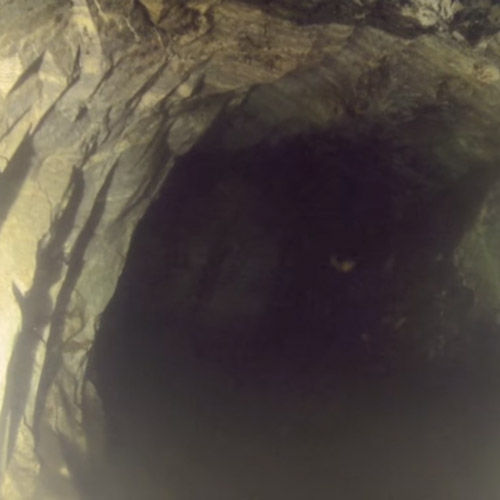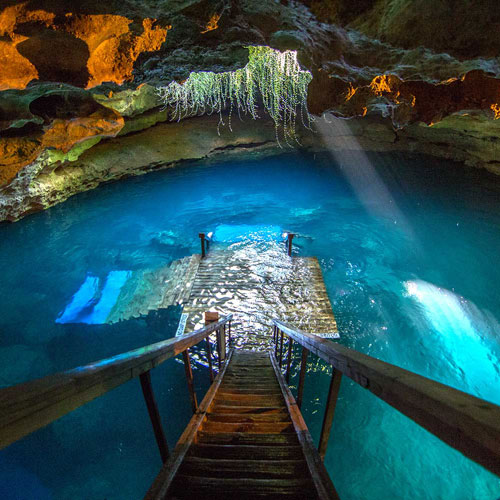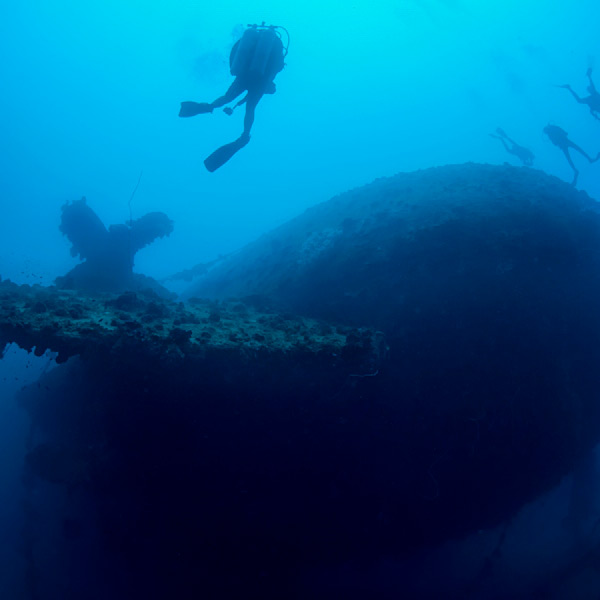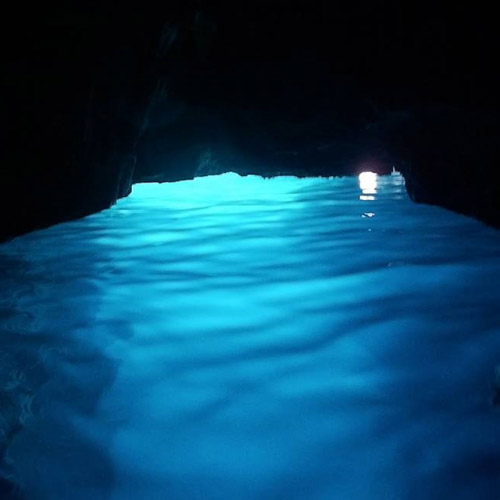Cave Diving: A Guide to the Thrills and Dangers of Exploring the Subterranean World
Cave diving is the underwater exploration of flooded caves. It is a challenging and rewarding activity that requires specialized training and equipment. Cave divers explore a variety of cave environments, including freshwater springs, sinkholes, and sea caves.
Cave diving is a relatively new activity, with the first recorded cave dive taking place in 1879. However, the sport has grown rapidly in recent decades, and there are now thousands of cave divers around the world.
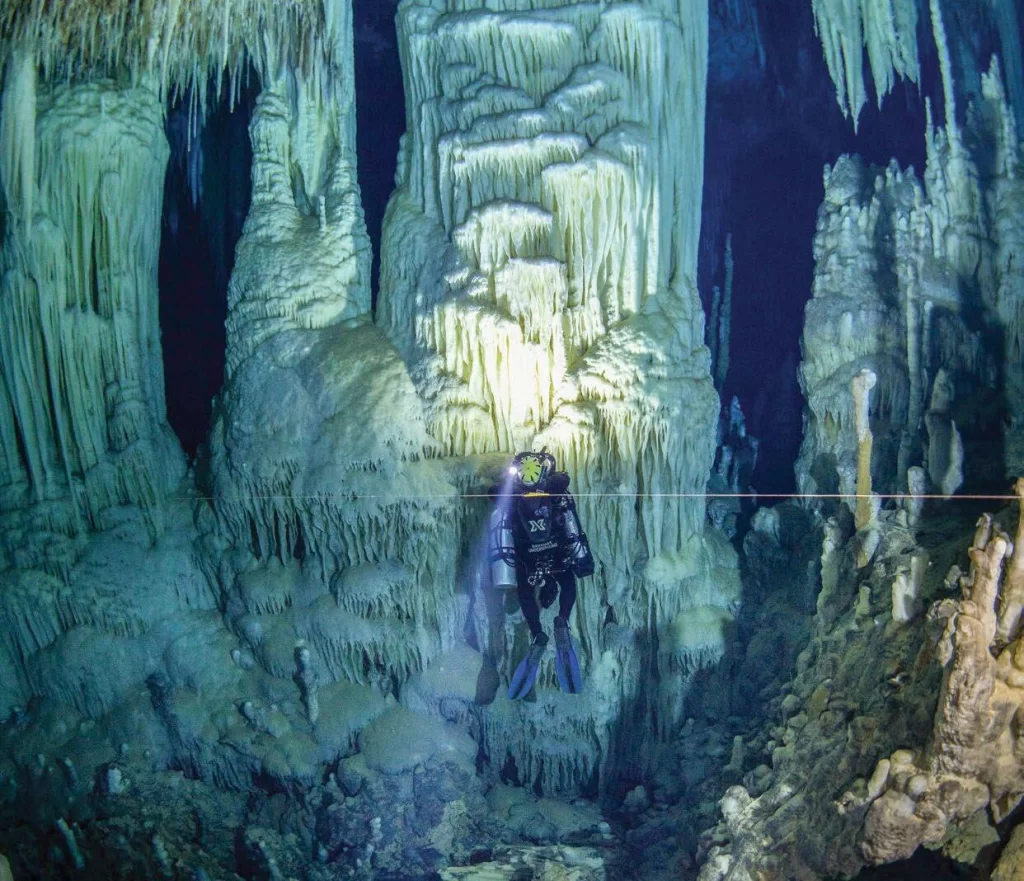
Cave diving is popular for a number of reasons. It offers the opportunity to explore uncharted territory and see unique geological formations. Cave diving can also be a very challenging and rewarding activity, both physically and mentally.
Cave Diving History
Cave diving is a relatively new activity with a history dating back to the late 19th century. The first known cave dive was conducted by William James Harding in 1879, when he explored Wookey Hole in Somerset, England. Harding used a primitive diving suit and a candle to light his way.
In the early 20th century, cave diving was primarily the domain of scientific researchers and explorers. However, in the 1950s and 1960s, cave diving began to develop into a recreational activity. This was due in part to the development of new diving equipment, such as the double-tank system and the backplate and harness.
In the 1970s and 1980s, cave diving experienced a surge in popularity. This was due in part to the publication of several books and articles about cave diving, as well as the release of several films and documentaries.
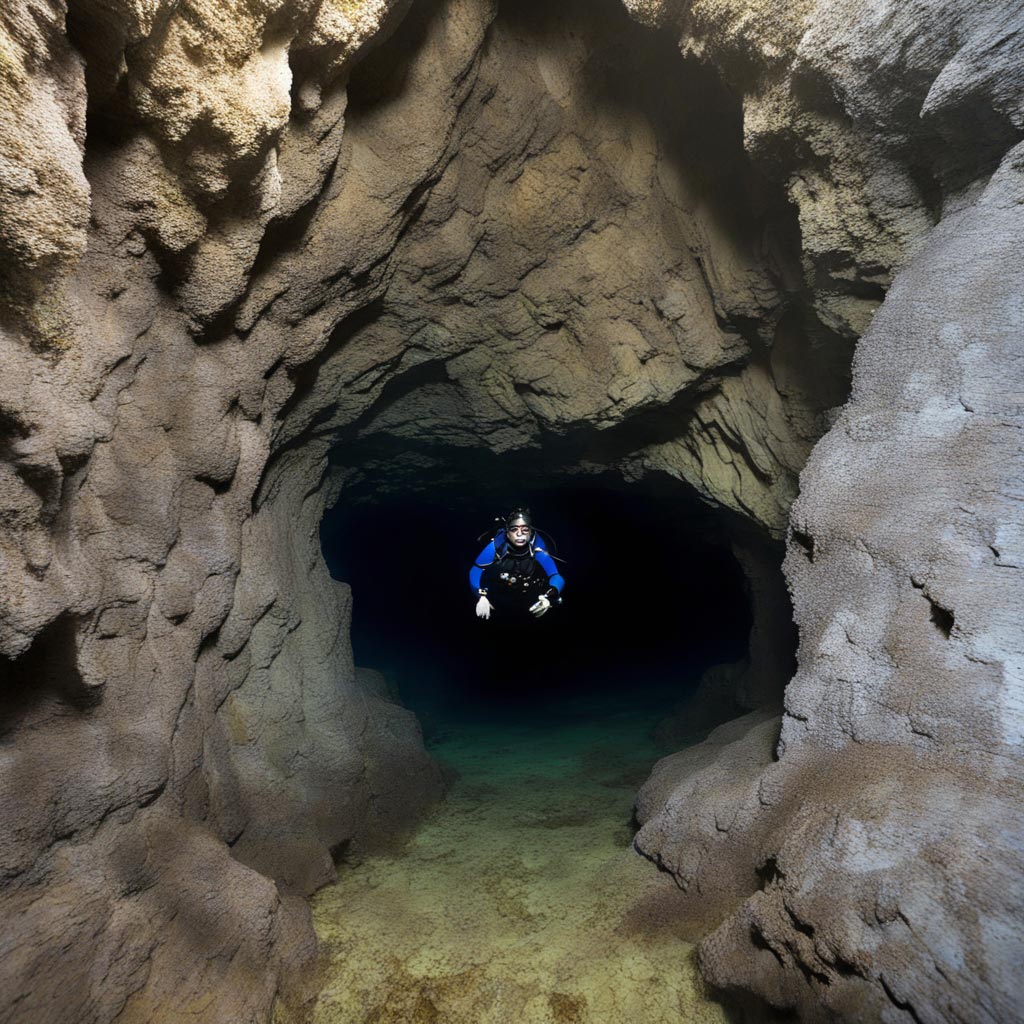
Today, cave diving is a popular recreational activity enjoyed by people all over the world. Cave divers explore a variety of cave environments, including freshwater springs, sinkholes, and sea caves.
Here are some other notable events in the history of cave diving:
- 1896: Leon Bertin and Auguste Piccard explore the Fontaine-de-Vaucluse in France, reaching a depth of 110 meters.
- 1949: Sheck Exley and Lamar Underwood explore the Wakulla Springs in Florida, reaching a depth of 105 meters.
- 1954: J. Y. Cousteau and Frédéric Dumas explore the Gouffre Berger in France, reaching a depth of 315 meters.
- 1962: Jim Bowden and Watts Parker explore the Devil’s Millhopper in Florida, reaching a depth of 94 meters.
- 1970: John Bennett and Barry Gilliam explore the Blue Hole in the Bahamas, reaching a depth of 110 meters.
- 1981: Bill Stone and Don Lindblad explore the Wookey Hole in England, reaching a depth of 101 meters.
- 2000: Vertical Blue in Mexico hosts the first international cave diving competition.
- 2010: Vertical Blue hosts the first world cave diving championship.
Types of Cave Diving
- Open Circuit Cave Diving:
- Description: Involves using a traditional scuba setup where the exhaled air is released into the water.
- Pros: Widely accessible, easier maintenance, and familiarity for many divers.
- Cons: Limited dive time, increased gas consumption, and potential for greater environmental impact.
- Closed Circuit Cave Diving:
- Description: Utilizes rebreathers that recycle exhaled air by removing carbon dioxide and adding oxygen.
- Pros: Extended dive times, reduced gas consumption, and minimized bubbles for less disturbance.
- Cons: Complex equipment, higher training requirements, and potential for technical failures.
- Rebreather Cave Diving:
- Description: A specialized form of closed circuit diving that involves using a rebreather apparatus for exploring submerged caves.
- Pros: Silent diving, longer bottom times, and reduced gas consumption.
- Cons: Higher cost, extensive training required, and increased complexity in equipment management.
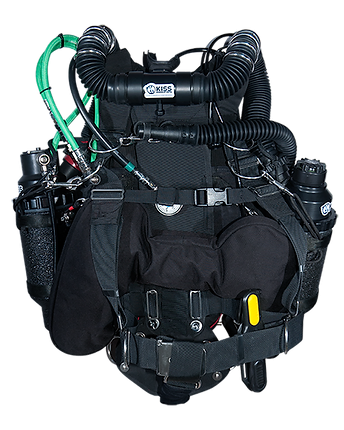
These types of cave diving cater to different preferences and skill levels, offering divers a range of options based on their experience and comfort with advanced equipment. Each type requires specific training and equipment considerations to ensure a safe and enjoyable diving experience.
Cave Diving Equipment
Cave diving requires specialized equipment to keep divers safe in the unique and challenging environment of underwater caves. The following is a list of essential cave diving equipment:
- Backplate and harness: A backplate and harness is a type of buoyancy compensator (BCD) that is specifically designed for cave diving. It is more durable and streamlined than a traditional jacket-style BCD, and it provides divers with more control over their buoyancy.
- Double tanks: Cave divers typically carry two tanks of gas, one primary and one backup. This allows them to extend their dive time and have a backup source of gas in case of an emergency.
- Regulators: Cave divers also need two regulators, one primary and one backup. The primary regulator is used for breathing, while the backup regulator is used in case of an emergency.
- Stage tanks: Stage tanks are tanks of gas that are placed along the dive line at various intervals. This allows divers to decompress safely during their ascent.
- Line reel: A line reel is used to deploy and retrieve the dive line. The dive line is a guideline that helps divers navigate through the cave and find their way back to the entrance.
- Lights: Cave divers need at least two lights, one primary and one backup. The primary light is used for illumination, while the backup light is used in case of an emergency.
- Cutting device: A cutting device is used to cut the dive line in an emergency.
- Compass: A compass is used to navigate through the cave.
- Depth gauge: A depth gauge is used to measure the diver’s depth.
- Dive computer: A dive computer is used to calculate decompression stops and track the diver’s dive profile.
- Mask and fins: Cave divers need a mask and fins that are comfortable and provide good visibility and maneuverability in tight spaces.
- Wetsuit or drysuit: Cave divers typically wear a wetsuit or drysuit to protect them from the cold water and silt.
- Hood and gloves: A hood and gloves can help to protect the diver’s head and hands from the cold water and silt.
In addition to the essential equipment listed above, cave divers may also choose to carry the following optional equipment:
- Dive propulsion vehicle (DPV): A DPV is a motorized underwater scooter that can help divers to travel longer distances and conserve their energy.

- Underwater camera: An underwater camera can be used to document the diver’s exploration of the cave.
- Communications gear: Communications gear can be used to communicate with other divers on the dive team.
It is important to note that cave diving is a complex and dangerous activity. Only properly trained and equipped divers should attempt to cave dive.
Cave Diving Techniques
Cave diving requires a specialized set of techniques in order to navigate safely through the unique and challenging environment of underwater caves. The following are some of the most important cave diving techniques:
Cave Diving Navigation:
Cave divers use a variety of navigation techniques to find their way through the cave and back to the entrance. These techniques include:
- Line navigation: Cave divers follow a guideline, or “line,” that leads them through the cave. The line is typically made of nylon or polypropylene rope and is attached to the cave wall with bolts or other anchors.
- Compass navigation: Cave divers also use a compass to navigate through the cave. This is especially important in complex cave systems with multiple passages.
- Depth navigation: Cave divers use a depth gauge to track their depth. This is important for staying on the correct dive profile and avoiding decompression sickness.
Cave Diving Line Management:
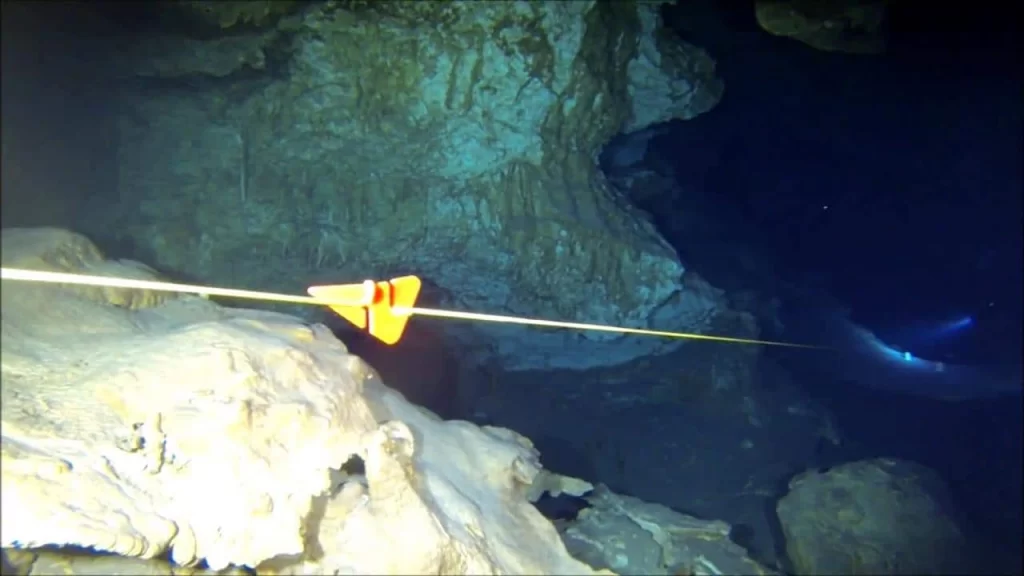
Line management is one of the most important skills in cave diving. Cave divers must be able to deploy and retrieve the dive line safely and efficiently. The dive line is a critical safety device, and it is important to keep it in good condition.
Cave Diving Buoyancy Control:
Buoyancy control is essential for cave diving. Cave divers must be able to maintain precise buoyancy control to avoid disturbing the silt and damaging the cave environment. Cave divers also need to be able to maintain their buoyancy in tight passages and when using a DPV.
Cave Diving Communication:
Communication is essential for cave diving. Cave divers must be able to communicate with their dive buddies and other members of their dive team. Cave divers typically use hand signals, underwater slates, or voice communication devices to communicate.
Cave Diving Emergency Procedures:
Cave divers must be familiar with a variety of emergency procedures, including:
- Line entanglement: If a cave diver becomes entangled in the dive line, they must be able to free themselves quickly and safely.
- Silting: If a cave diver stirs up silt, they must be able to reduce their visibility and maintain their composure.
- Loss of visibility: If a cave diver loses visibility, they must be able to follow the dive line back to the entrance.
- Equipment failure: If a cave diver experiences equipment failure, they must be able to manage the situation and safely return to the entrance.
Cave diving is a complex and dangerous activity. It is important to be properly trained and equipped before attempting to cave dive.
Additional Tips:
- Cave divers should always dive with a buddy.
- Cave divers should always have a backup plan in case of an emergency.
- Cave divers should be aware of the limitations of their equipment and their own abilities.
- Cave divers should respect the cave environment and avoid damaging it.
Cave diving can be a rewarding and exhilarating experience, but it is important to be aware of the risks and to take all necessary precautions.
Cave Diving Dangers
Limited visibility
Cave water is often murky, which can make it difficult to see. This can be a major problem in tight passages or in the event of an emergency. Cave divers must use powerful lights and be aware of their surroundings at all times.
Tight passages
Cave passages can be very narrow, requiring divers to squeeze through tight spaces. This can be dangerous, especially if the diver is carrying heavy equipment. Cave divers must be careful not to get stuck or injure themselves.
Silting
Cave divers can stir up silt, which can reduce visibility and make it difficult to breathe. Silt can also damage the cave environment. Cave divers must be careful not to disturb the silt and should use techniques to minimize their impact on the environment.
Narcosis
Nitrogen narcosis is a condition that can impair judgment and coordination. It is more common at depth, so cave divers must be careful not to dive too deep. Cave divers should also be aware of the signs and symptoms of narcosis so that they can take corrective action if necessary.
Decompression sickness
Decompression sickness is a condition that can occur when divers ascend too quickly. It can cause a variety of symptoms, including pain, paralysis, and death. Cave divers must plan their dives carefully and ascend slowly to avoid decompression sickness.
Other dangers of cave diving include:
- Entanglement in the dive line
- Equipment failure
- Getting lost
- Cave-ins
- Strong currents
Cave divers must be aware of all of these dangers and take all necessary precautions to stay safe.
Latest Cave Diving Accidents
Cave Diving Safety
Cave diving is a challenging and rewarding activity, but it is also a dangerous sport. Cave divers must be aware of a number of hazards and take all necessary precautions to stay safe.
Cave Diving Training
The most important safety precaution for cave diving is to be properly trained. Cave diving training should be conducted by a qualified instructor who is certified by a reputable cave diving organization. Cave diving training should cover a variety of topics, including:
- Cave diving equipment and its use
- Cave diving navigation techniques
- Cave diving line management techniques
- Cave diving buoyancy control techniques
- Cave diving communication techniques
- Cave diving emergency procedures
Cave Diving Buddy System
Another important safety precaution for cave diving is to always dive with a buddy. The buddy system is a system of mutual support that helps divers to stay safe in the event of an emergency. Cave diving buddies should stay close together and communicate regularly.
Cave Diving Risk Management
Cave divers should also be aware of the risks of cave diving and take steps to manage those risks. Some of the most common risks of cave diving include:
- Limited visibility: Cave water is often murky, which can make it difficult to see.
- Tight passages: Cave passages can be very narrow, requiring divers to squeeze through tight spaces.
- Silting: Cave divers can stir up silt, which can reduce visibility and make it difficult to breathe.
- Narcosis: Nitrogen narcosis is a condition that can impair judgment and coordination. It is more common at depth, so cave divers must be careful not to dive too deep.
- Decompression sickness: Decompression sickness is a condition that can occur when divers ascend too quickly. It can cause a variety of symptoms, including pain, paralysis, and death.
Cave divers can manage the risks of cave diving by:
- Diving within their limits: Cave divers should only dive in caves that they are qualified to dive in. They should also stay within the depth and time limits of their training and experience.
- Using proper equipment: Cave divers should use specialized cave diving equipment that is in good condition.
- Following safety procedures: Cave divers should always follow safety procedures, such as the buddy system and the rule of thirds.
Cave Diving Facts and Records
The deepest recorded cave dive is 274 meters (899 feet). This was achieved by Nuno Gomes in 2017, when he explored the Boqueirao do Inferno in Brazil.
The longest recorded cave dive is 300 kilometers (186 miles). This was achieved by a team of divers in 2019, when they explored the Sistema Sac Actun in Mexico.
The largest cave system in the world is Mammoth Cave in Kentucky, USA. It is over 672 kilometers (417 miles) long.
Cave divers have discovered a variety of unique and fascinating creatures in underwater caves, including blind fish, albino salamanders, and giant cave crickets.
Cave diving is used in a variety of applications, including scientific research, search and rescue, and underwater photography.
Here are some additional cave diving records:
- The deepest freshwater cave dive is 221 meters (725 feet). This was achieved by Jim Warny in 2014, when he explored the Fountain of Vaucluse in France. Jim Warny deepest freshwater cave dive Fountain of Vaucluse
- The longest cave dive in Mexico is 296 kilometers (184 miles). This was achieved by a team of divers in 2017, when they explored the Sistema Sac Actun-Sistema Dos Ojos cave system.
- The longest cave dive in the United States is 258 kilometers (160 miles). This was achieved by a team of divers in 2022, when they explored the Mammoth Cave system
Spelunking vs Cave Diving
Spelunking and cave diving are both activities that involve exploring caves, but they differ in several significant ways.
Spelunking is the exploration of caves primarily on foot or crawling on your belly. It is a recreational activity that does not require any specialized training or equipment. Spelunkers typically explore dry caves, but they may also explore wet caves if they are wearing the appropriate gear.
Cave diving, on the other hand, is the exploration of underwater caves using scuba gear. It is a technical activity that requires specialized training and equipment. Cave divers typically explore flooded caves, which can be very deep and complex.
Here is a table that summarizes the key differences between spelunking and cave diving:
| Characteristic | Spelunking | Cave Diving |
|---|---|---|
| Definition | Exploration of caves on foot or crawling | Exploration of underwater caves using scuba gear |
| Training required | None | Specialized training required |
| Equipment required | Basic gear (flashlight, helmet, etc.) | Specialized equipment (scuba gear, line reel, etc.) |
| Environment explored | Dry or wet caves | Flooded caves |
| Risks | Getting lost, injured, or trapped | All of the risks of spelunking plus the risks of scuba diving, such as decompression sickness and equipment failure |
Which activity is right for you?
If you are interested in exploring caves but do not have any prior experience, spelunking is a good place to start. Spelunking is a relatively safe activity, and it does not require any specialized training or equipment.
Cave diving is a challenging and rewarding activity, but it is also a dangerous sport. Cave divers must be aware of a number of hazards and take all necessary precautions to stay safe.
Cave diving training is essential for anyone who wants to explore the underwater world of caves. Cave diving training teaches divers the skills and knowledge they need to navigate safely through the unique and challenging environment of underwater caves.
Cave divers should always dive with a buddy. The buddy system is a system of mutual support that helps divers to stay safe in the event of an emergency. Cave diving buddies should stay close together and communicate regularly.
Cave divers should also be aware of the risks of cave diving and take steps to manage those risks. Some of the most common risks of cave diving include limited visibility, tight passages, silting, narcosis, and decompression sickness. Cave divers can manage the risks of cave diving by diving within their limits, using proper equipment, and following safety procedures.
Cave diving can be a rewarding and exhilarating experience, but it is important to be aware of the risks and to take all necessary precautions. By being properly trained and equipped, and by following safety procedures, cave divers can minimize the risks and maximize their enjoyment of the sport.
Here are some additional tips for cave divers:
- Be respectful of the cave environment and avoid damaging it.
- Leave no trace of your visit.
- Be aware of the potential impact of your diving on the cave ecosystem.
- Support cave conservation and research efforts.
FAQ
Yes, cave diving comes with inherent risks due to the challenging underwater environments. Divers mitigate these risks through extensive training, adherence to safety protocols, and the use of specialized equipment. Following proper cave diving techniques, staying within skill limits, and having redundant systems in place contribute to minimizing potential dangers.
Cave diving is not recommended for novice divers. It requires specialized training beyond basic open water certification. Divers must possess advanced skills in buoyancy control, navigation, and emergency procedures. Gaining experience through progressively challenging dives and completing cave diving courses is essential before attempting cave exploration.
Cave diving offers a unique and surreal underwater experience, allowing divers to explore hidden realms that few have witnessed. The allure includes discovering breathtaking geological formations, encountering unique marine life, and the thrill of navigating through intricate passages. The sense of accomplishment and the exclusive beauty of cave environments attract adventure-seeking divers to this challenging and rewarding activity.

